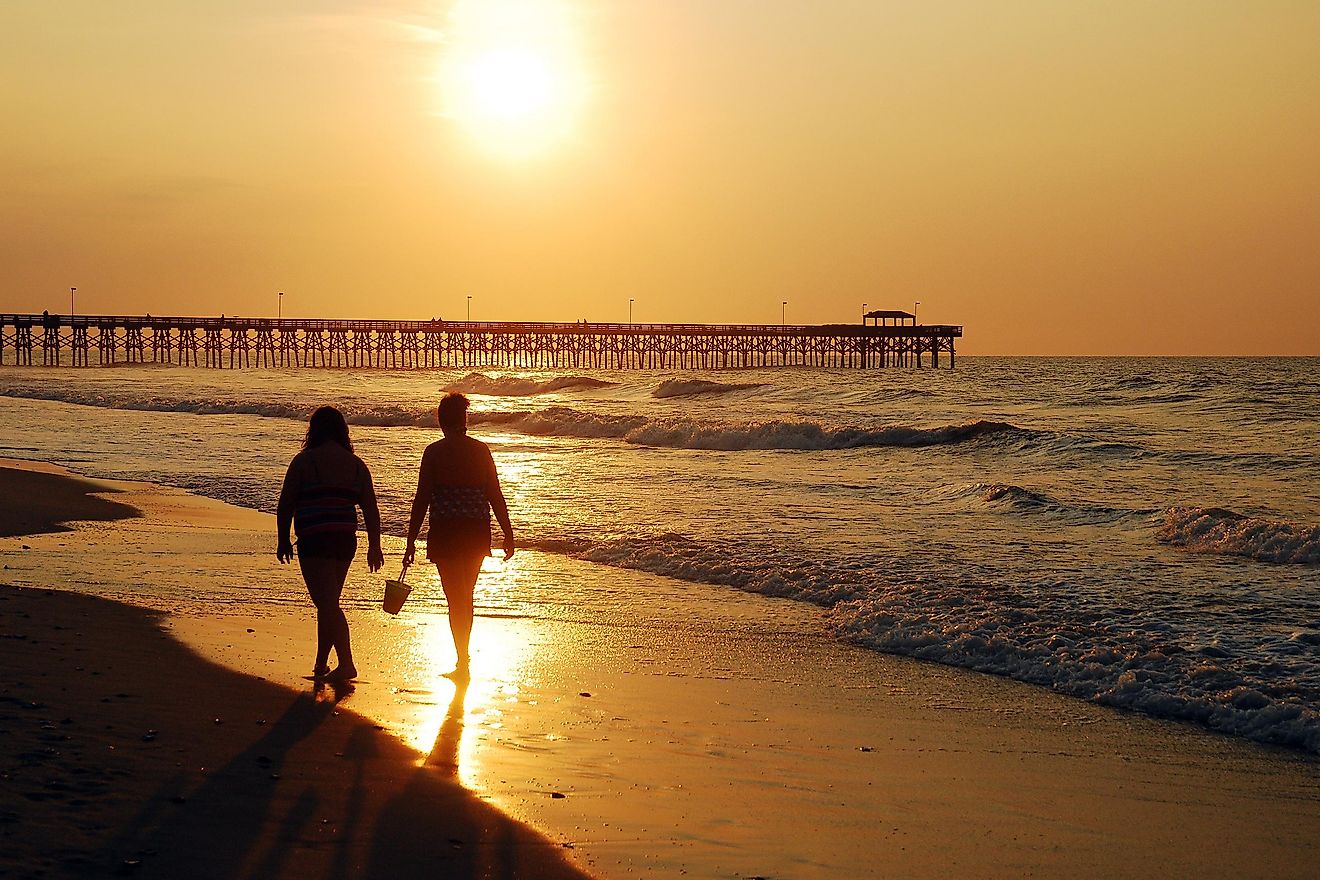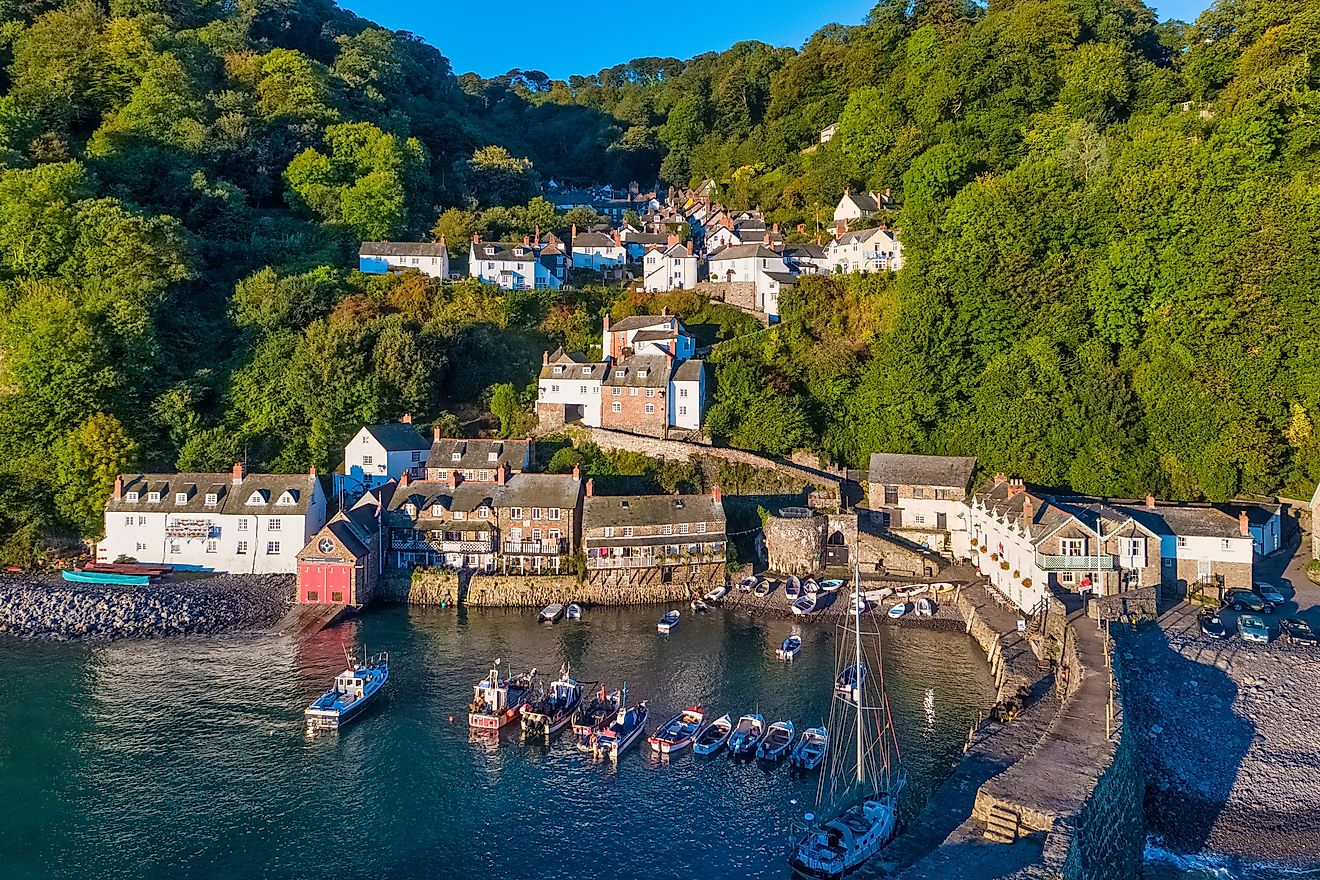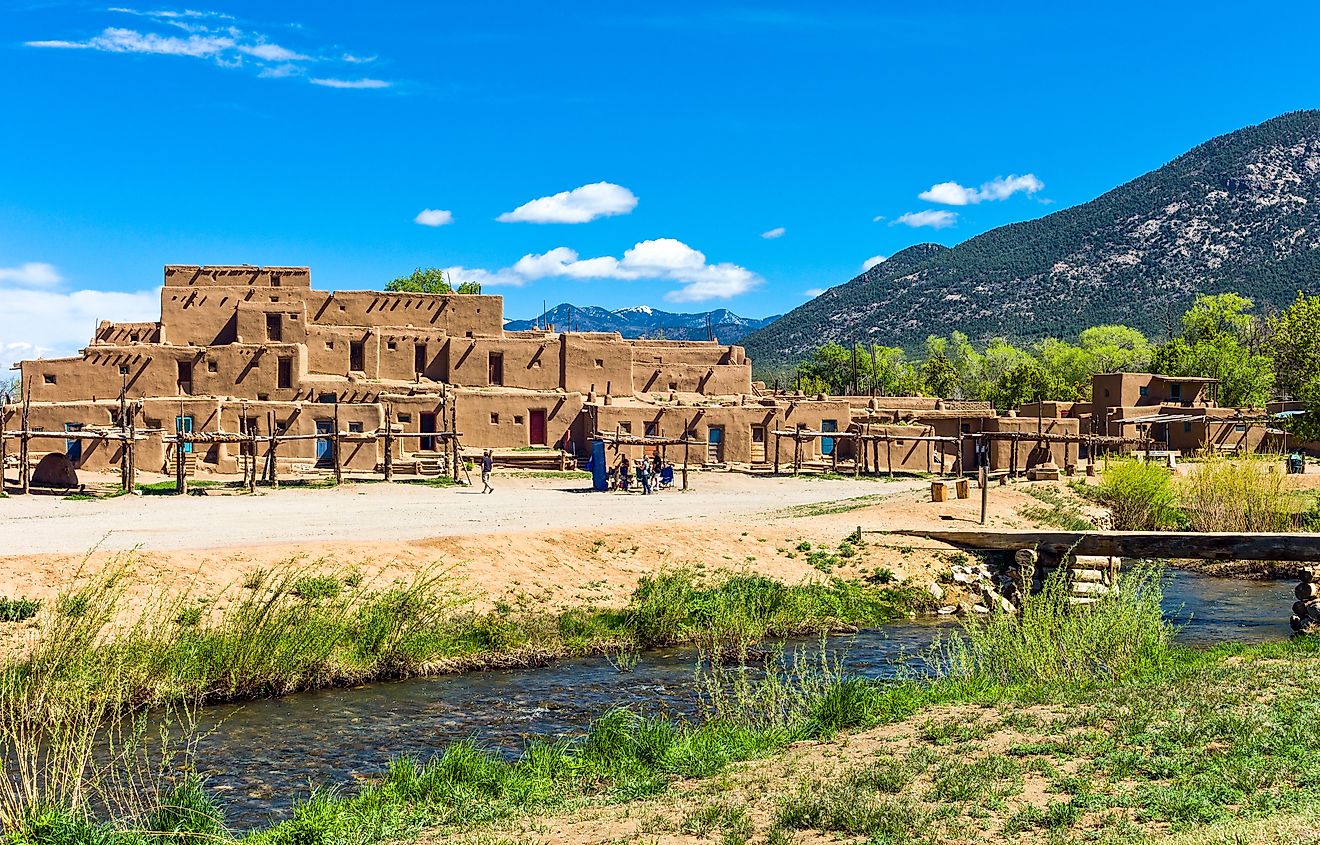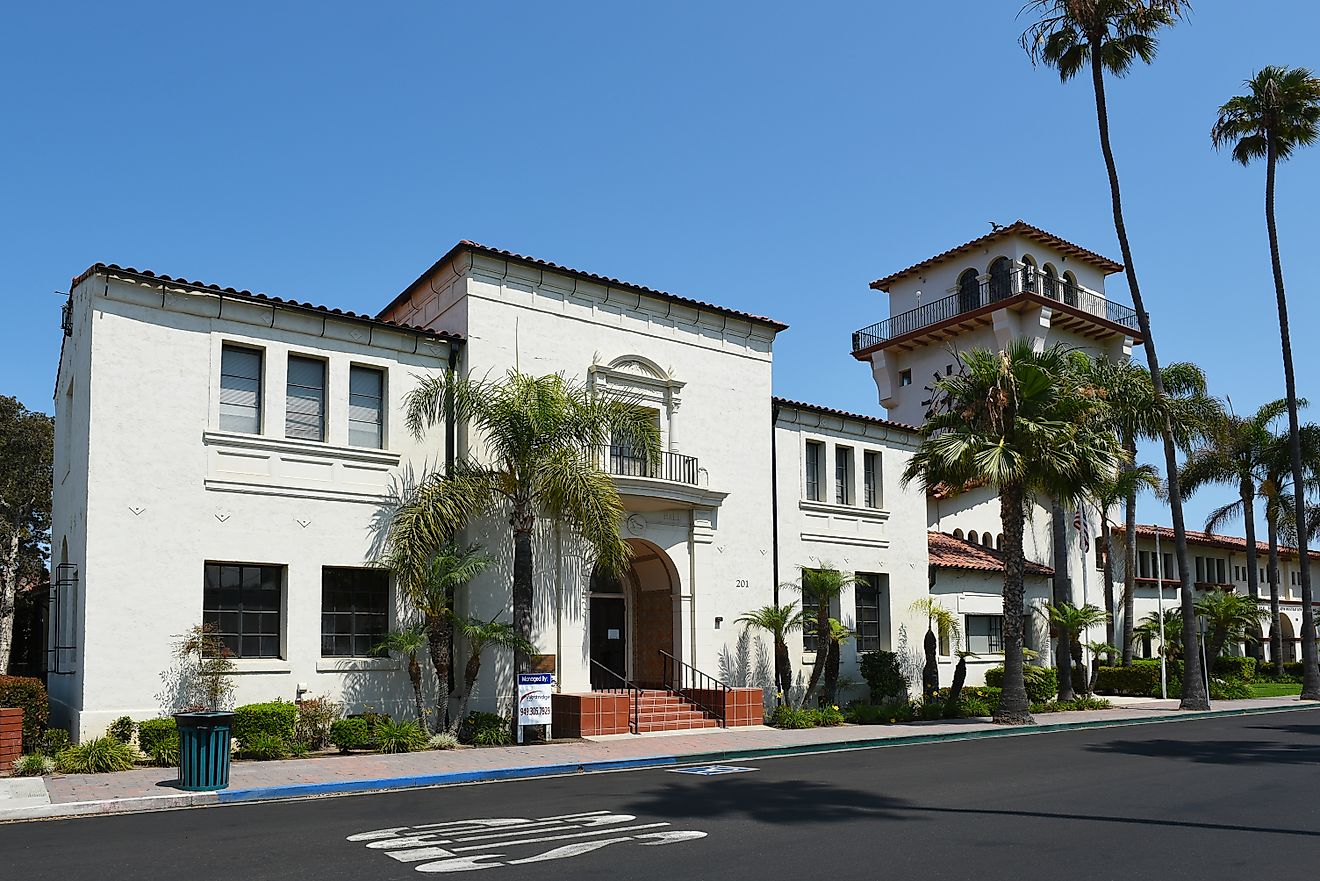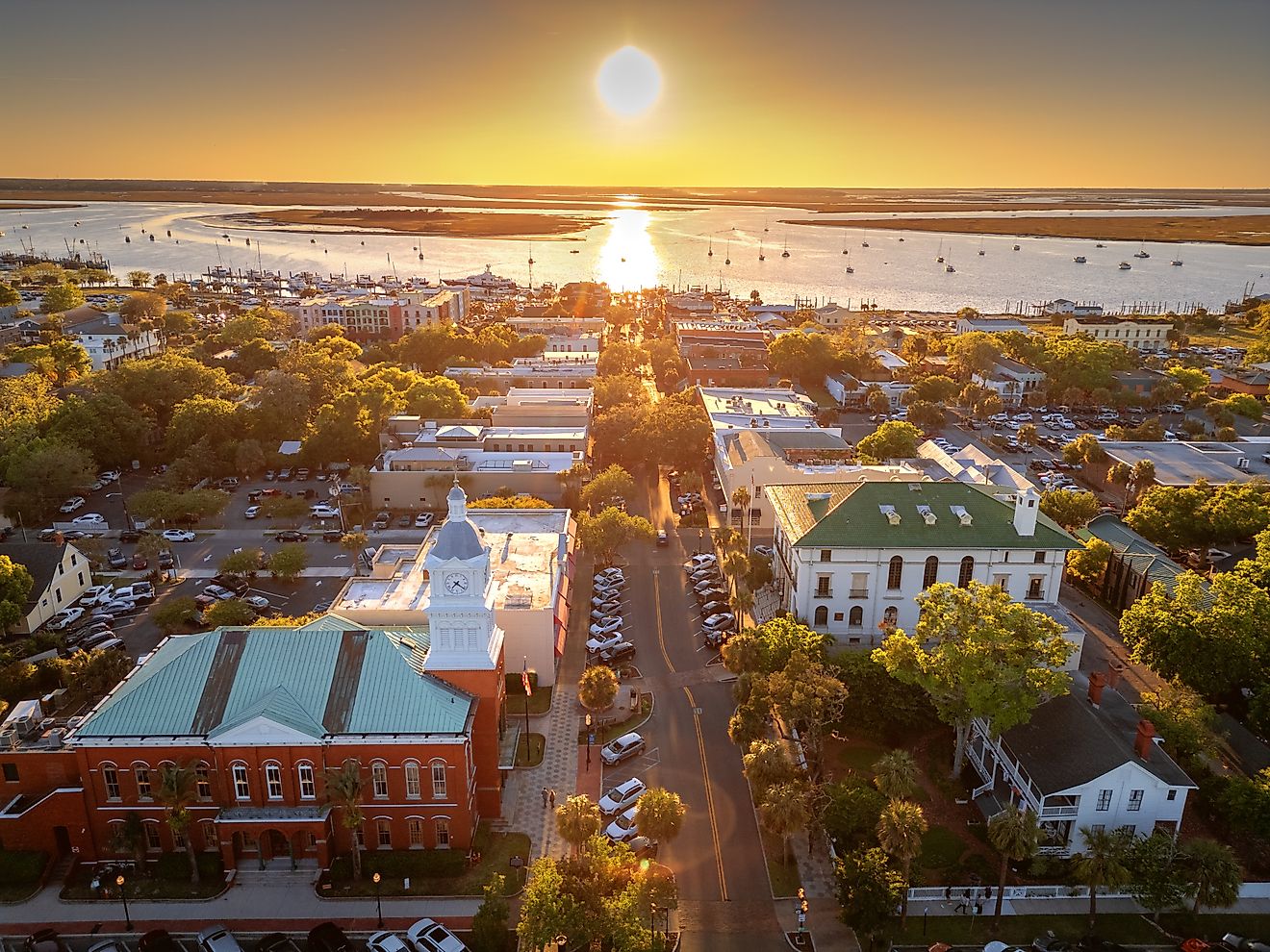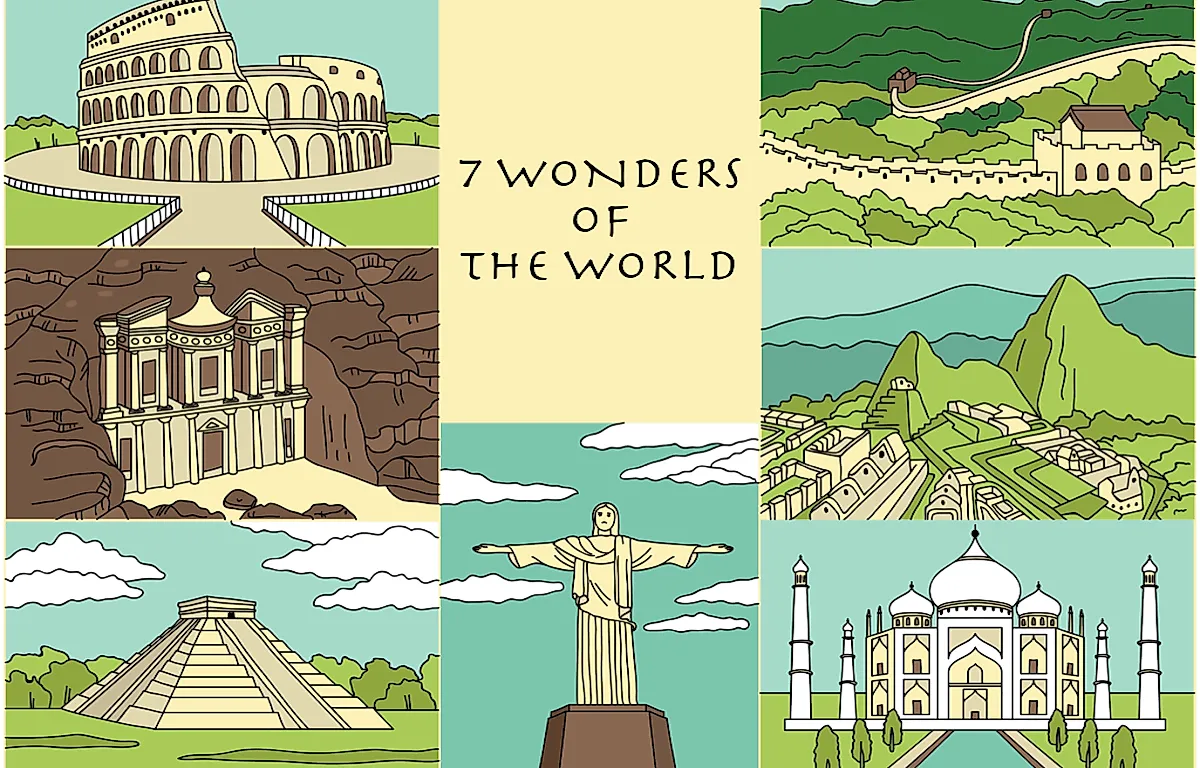
The 7 Wonders Of The World
Over 2000 years ago, Greek travelers compiled a list of the most incredible marvels they encountered, which would become famously known as The Seven Ancient Wonders of the World. However, with the Pyramids of Giza being the only original survivor, a Swiss organization decided to take matters into its own hands and update the list. In 2001, New7Wonders Foundation asked the public which places they thought were the world’s biggest wonders. After more than 100 million votes and deliberation between 200 potential candidates, these seven became the victors.
The 7 New Wonders Of The World
| Wonder | Location | Approximate Year Built | Approximate Visitors Per Year |
|---|---|---|---|
|
China |
700 BCE |
10 Million |
|
|
Yucatán, Mexico |
435 to 600 CE |
2.5 Million |
|
|
Ma'an, Jordan |
312 BCE |
900 Thousand |
|
|
Cuzco Region, Peru |
1450 CE |
1.5 Million |
|
|
Rio de Janeiro, Brazil |
1931 CE |
2 Million |
|
|
Rome, Italy |
80 CE |
4 Million |
|
|
Agra, India |
1648 CE |
7 to 8 Million |
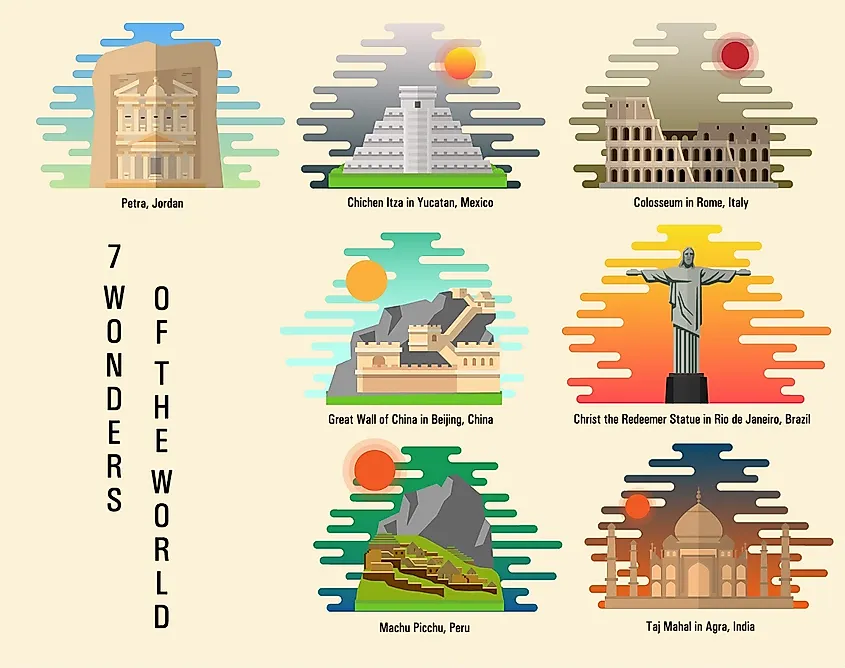
The Great Wall of China
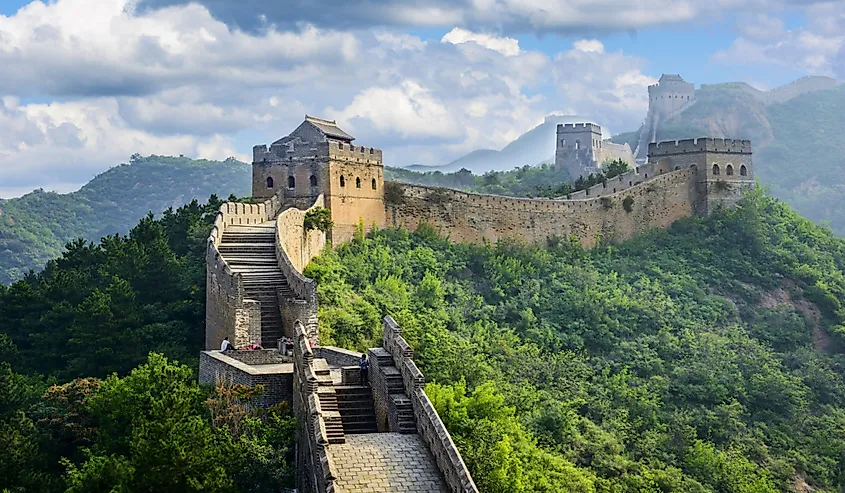
In Northern China, the Great Wall of China is one of the largest construction projects recorded in human history. Despite popular belief, the Great Wall cannot be seen by the naked eye from outer space. While estimates of its length vary, China’s National Administration of Cultural Heritage reports the wall to be an impressive 13,170 miles (21,195 kilometers) long. Walking the entire wall nonstop would take approximately 17 months! Some work on the wall dates back to the 7th century BCE, although the Ming Dynasty constructed the principal, most well-preserved parts between 1368 and 1644. Contrary to popular belief, the Great Wall of China is not a singular, connected wall. It actually consists of numerous walls, some parallel for stretches, accompanied by watch towers and platforms. China built the Great Wall to better protect its northern border, although its effectiveness is debated. The Great Wall has been a UNESCO World Heritage site since 1987. Today, over 10 million tourists visit the wall every year. Visitors can easily access it from Beijing.
Chichén Itzá
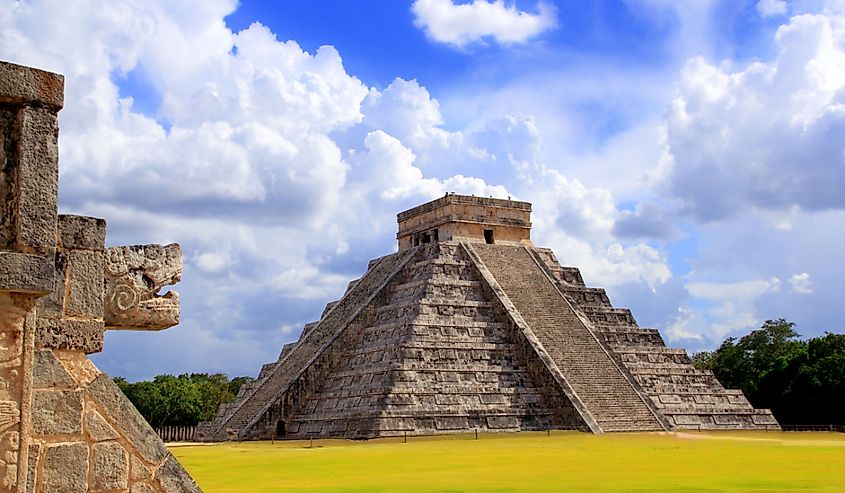
Situated in Yucatan, Mexico, Chichén Itzá was a city built by the Mayan people. The first settlements in the city began in approximately 435-600 CE, while the city would become abandoned hundreds of years later in 1250 CE. The Mayan tribe, Itzá, was responsible for many of the structures built in this city. The most well-known pyramid in Chichén Itza is El Castillo, a four-sided pyramid that is 185 feet (55.5 meters) wide and 78 feet (24 meters) tall. Impressively, the pyramid has 365 steps, each step representing a day of the year. During the spring and fall equinoxes, a shadow forms on the temple’s north stairway, creating the illusion of a slithering serpent. Today, 26 ruins still stand in Chichén Itzá, and approximately 2.5 million people visit the site every year. Most visitors travel from Cancun or the Rivera Maya to see Chichén Itzá.
Petra
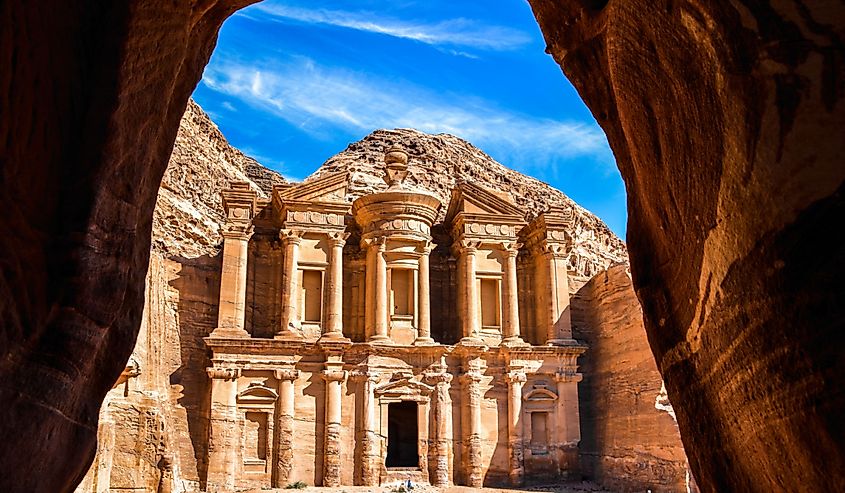
Petra, Jordan, is an ancient city whose buildings are carved into pink, red, and white sandstone cliffs. It is one of the oldest existing cities in the world and stretches over 100 square miles (259 square kilometers). The Nabateans founded it in approximately the fourth century, chiseling temples, dwellings, and tombs in the stone. The Nabateans also had very advanced infrastructure, creating an impressive irrigation system of dams, canals, and reservoirs that provided water for over 30,000 participants in the otherwise arid zone. Some remnants of this irrigation system are still visible today. Visitors may recognize the ancient city from Indiana Jones and The Last Crusade, which filmed several scenes there. Petra became a UNESCO World Heritage site in 1985, and currently, around 900,000 people visit it annually.
Machu Picchu

Machu Picchu is an Incan ancient ruins site located in the Andes Mountains, near the city of Cusco, Peru. Built in approximately 1450 CE, the Incans used very impressive drystone techniques, snuggly fitting together jagged stones like jigsaw pieces. Thanks to this intricate building technique, many of the structures continue to stand to this day. Peruvian farmer Agustín Lizárraga was the first recorded individual to discover Machu Picchu in 1902. However, Herman Bingham brought it to the attention of the Western world in 1911 with his discovery of it. There are many theories about the reasons for Machu Picchu’s construction. Some scholars believe that Machu Picchu was a holy convent known as “Virgins of the Sun” for women who were dedicated to the Incan sun god, Inti. Other theories include the city being a royal retreat for the Emporer Pachacuti or being a trading hub or location to test new crops. In 1983, Machu Picchu became a UNESCO World Heritage site, and today, approximately 1.5 million people visit it each year.
Christ the Redeemer
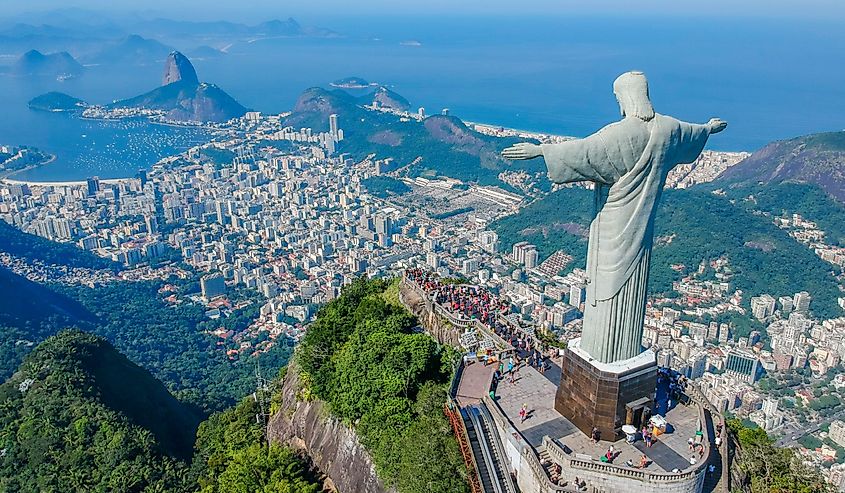
Located in Rio de Janeiro, Brazil, Christ the Redeemer is a massive, 98-foot (30-meter) tall statue made of concrete and soapstone. It is the youngest of the New Seven Wonders of the World. Princess Isabel introduced the concept when she requested that an image of Jesus Christ be erected in 1888, honoring Brazil's abolition of slavery. The Roman Catholic archdiocese of Rio de Janeiro re-proposed the idea in 1921, receiving approval from President Epitácio Pessoa shortly after. It opened to the public ten years later, in 1931. Around 2 million people visit the site every year.
The Colosseum
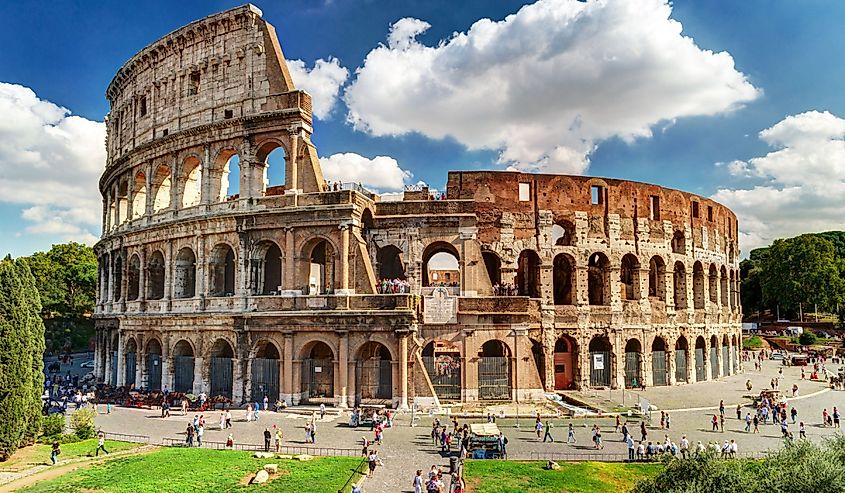
The Colosseum in Rome, Italy, is the largest amphitheater built in human history and is composed mainly of concrete, limestone, and wood. Emperor Vespasian, who wanted a space for Romans to seek entertainment, ordered the construction. This construction began around 72 CE and was completed in 80 CE. The Colosseum, at 620 by 513 feet (189 by 156 meters), could seat up to 50,000 viewers. Most events in The Colosseum were violent in nature, largely consisting of gladiator fights, public executions, and animal hunts. Between gladiators, prisoners, slaves, convicts, and other entertainers, an estimated 400,000 people died during the 350 years in which The Colosseum hosted events. It became a UNESCO World Heritage site in 1980. Over 4 million people visit The Colosseum annually.
The Taj Mahal
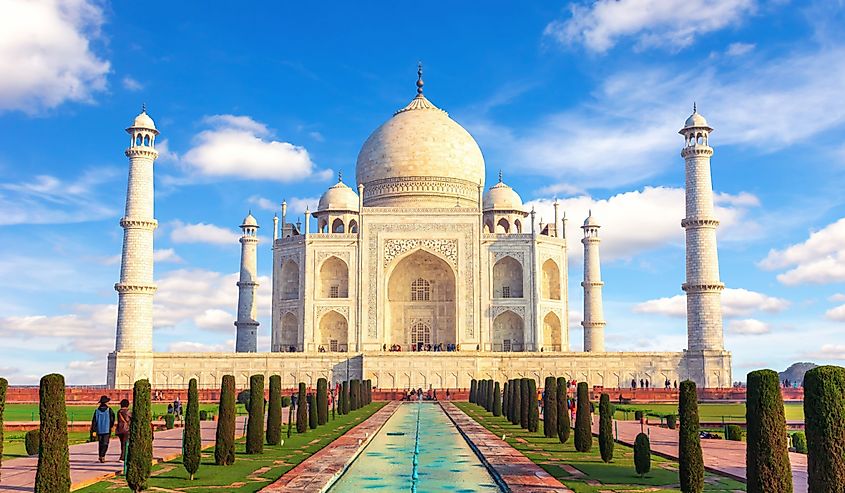
The Taj Mahal, situated in Agra, India, is an impressive mausoleum considered to be one of the most beautiful buildings constructed by mankind and a key example of Islamic art. In 1632, Emperor Shah Jahān ordered it to be built in honor of his wife, who died during the childbirth of their 14th child. About 20,000 workers were involved in the construction process, which lasted until about 1648. The complex also included an expansive garden and a reflecting pool. The mausoleum consists of white marble and semiprecious stones that form intricate floral and geometric patterns. Shah Jahān additionally had the marble designed to have a pink tint in the morning and a gold tint in the moonlight. Jahān and his late wife, Mumtaz Mahal, were both buried in the building after. In 1983, it became a UNESCO World Heritage Site. 7 to 8 million people visit the Taj Mahal every year.
While the Pyramids of Giza is the only survivor from the original Ancient Wonders list, the new additions to the roster showcase humankind’s innovation and ingenuity throughout the centuries. Not only do the New Wonders exhibit physical diversity, but each one shares a unique background and history that contributed to its creation. As we marvel at the Great Wall of China, the intricate structures of Petra, and the architectural magnificence of the Taj Mahal, we are left to ponder: will future generations witness the emergence of new world wonders?
